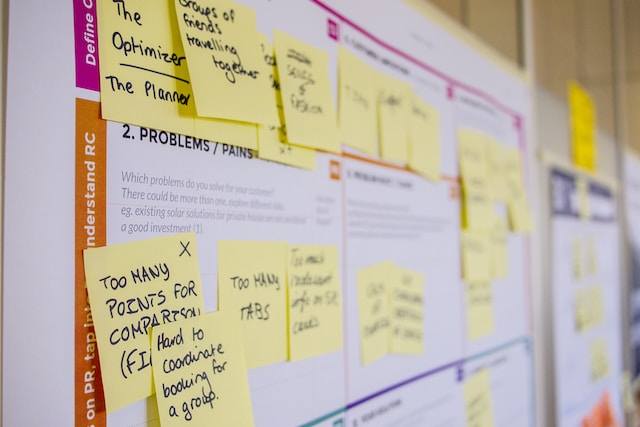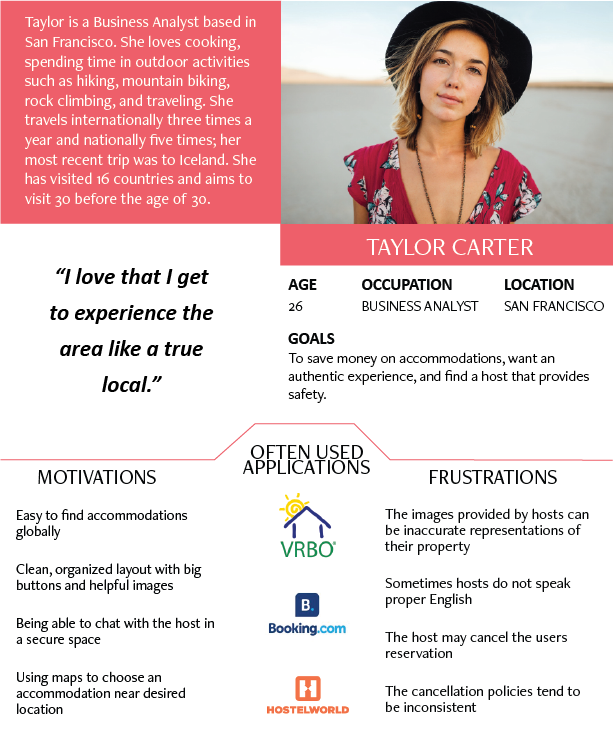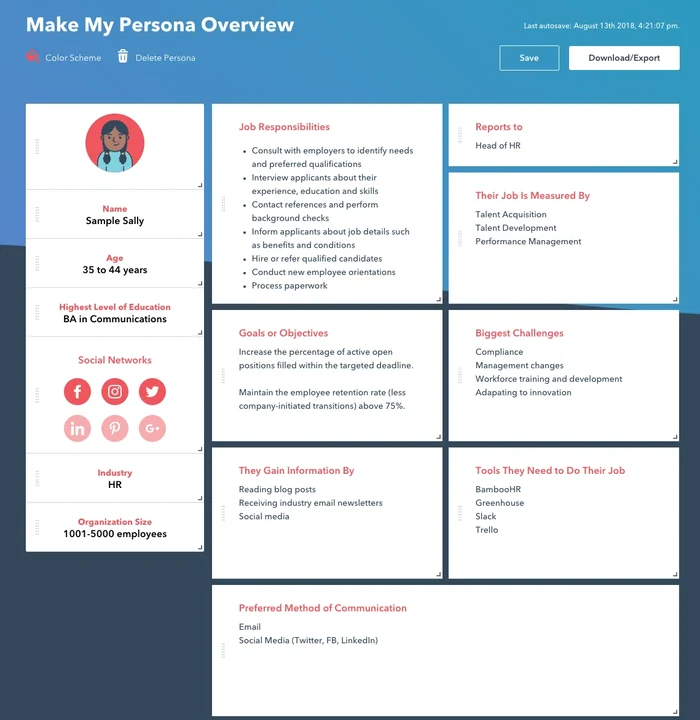Securing a career within the UX field means that you value the creation of an exceptional user experience.
For UX researchers/UX designers, the ideal user experience relies on a confident understanding of their user base.
It’s imperative that you utilize empathic, human-centered designs to produce intuitive, enjoyable products that solve the issues of real people.
So, in order to design said products effectively, you must utilize techniques that will procure user-centric data.
This is where our actionable guide enters the picture. We’re here to answer that question, as well as address the different types of user personas you can use.
Additionally, we shall explore examples, templates, and generators you can use and—most importantly—how to create them!
So, What Is a User Persona?
A user persona serves as a fictional representation of the ideal target user of your products/services.
A vital part of UX research is that these reflect your target audience’s behaviors, goals, pain points, attitudes, and mental models.
User personas imbue the design process with empathy. Without it, you wouldn’t recognize what your users’ needs are and why they need them.
This empathy-driven technique allows you to connect to your users on a psychological level to improve the product development process.
It’s likely that you already have a rough idea of what your ideal customer is. However, if you’re unsure of how to create one, it’s worth considering the different types of characterizations.

Types of User Personas
The type you use will have a significant influence over how your design team creates a product.
For this reason, the type you elect must be likely to create a realistic character. The more realistic your character is, the more probable it is that your product will fulfill its purpose.
So, with this in mind, we will explore the three different types of user personas.
Proto Personas
The first type of user persona we’ll discuss is the proto persona. Also known as ‘lightweight’ personas, you can quickly produce proto-personas because they require no new research to create.
You can use preexisting insights from user data you’ve already obtained or assumptions made around your intended user base.
Usually, you’ll create proto-personas during a workshop alongside your team, stakeholders, and potentially some key clients.
Every participant will create a persona during the workshop and will then share them for discussion. After an analytical collaboration, you’ll pick a selection of user personas that seem the most accurate.
Expectedly, you may wonder what the benefits are to a persona that demands no new research.
Proto personas best suit the start of the research process or small, lean design teams. Design teams who encounter pressing time constraints or resource shortages should also use proto-personas.
The most prominent advantage of using proto-personas is that they unify your team’s assumptions. Ultimately, they elucidate originally implicit assumptions to prevent your team from focusing on unorganized suppositions. Even if your results don’t accurately represent real users, your team has a shared baseline upon which to rebuild.
Of course, it’s hard to ignore the disadvantage that proto-personas often produce inaccurate assumptions due to the lack of research.
Qualitative Personas
As its name suggests, qualitative personas involve exploratory qualitative research, like focus groups and user interviews.
Most design teams will utilize a small-medium sample size to generate a few new insights to accompany preexisting data.
The insights you’re aiming to obtain will reveal the elements/qualities of a user experience that the user prioritizes. Specifically, your data will relate to their pain points, expectations regarding their interactions with the product, and their goals.
You’ll then analyze this data to situate trends and patterns in the participants’ answers. In doing so, you can identify similarities in the participants’ experiences and then communicate your findings with your design team. From here, you’ll start to draft your user personas around the trends/patterns you’ve identified.
Unsurprisingly, the majority of design teams utilize qualitative personas. Qualitative personas suit the needs of teams with time constraints while also producing valuable insights about your prospective users. They serve as an expansion of proto-personas, offering data that is impossible to attain from assumptions alone.
It’s worth noting, however, that due to its small sample sizes, qualitative personas aren’t entirely accurate. With small sample sizes, you risk excluding users with a diverse range of needs, which could impact your product’s accessibility.

Mixed Personas
Mixed personas, otherwise known as statistical personas, require the most research out of all of the persona types. Expectedly, mixed personas combine qualitative and quantitative research methods.
Like qualitative personas, you’ll start with exploratory qualitative research to determine which questions you should include in a user survey.
You must employ questions that explore the users’ experiences, including expectations, needs, desires, and frustrations. Most importantly, your questions should clarify the users’ goals so that your data is actionable.
Once you’ve formulated your questions, you will then distribute your survey to a large participant pool. You should use statistical analysis to identify trends and similarities across your large amount of responses.
Note: You should aim for a sample size of at least 100 participants.
With mixed personas, you can determine what percentage of your user base your user personas represent. With this percentage, you can then evaluate which one to prioritize.
Additionally, with mixed personas, you know you aren’t disproportionately representing participants with unusual answers.
A User Persona Template
A user persona template is a useful tool that you can use to represent and summarize your target audience.
An effective template will enable you to map out your users’ mental models and emotions to provide valuable, shareable insights.
Here’s what to look for in an effective user persona template:
- Your template should suitably represent your user base.
- Stakeholders should easily understand your template.
- Your template should stem from research, insights, creativity, and well-informed guesses.
- Your template must exhibit adaptability.
- Your templates must have identical designs so that other teams can implement improvements.
- Your template must prioritize the user’s thoughts, feelings, and traits over demographic information like age or gender.
- Your template should adhere to UX design principles.
Now that you know what makes a user persona template effective, it’s time to look at some examples.
User Persona: Examples
It’s always beneficial to find inspiration in how other designers approach their process. Feel free to search for user persona examples and continue reading to see the ones we have provided.
Consider Sneha Kulkarni’s Airbnb user persona.
In order to acquire the necessary research for her user persona, Sneha Kulkarni conducted five user interviews. In doing so, she obtained in-depth qualitative data that she then paired with sourced data from Airbnb users.
As you can see, Sneha has implemented all of the necessary elements:
- A fictional name and image.
- A realistic narrative.
- A quote that summarizes her user persona’s priorities regarding the user experience.
- A concise list of research-based demographics.
- A list of psychographics that relate to her qualitative findings.
Sneha Kulkarni’s user persona has every facet of valuable information that an effective one should convey. What’s more, she has also gone above and beyond. Sneha has incorporated her user persona’s most-used applications regarding the Airbnb experience.
By doing this, Sneha and her team can then examine the applications to 2identify commonalities regarding Taylor’s pain points. In finding these trends, she will be able to refine her own product. Ultimately, she has ensured her users won’t encounter the same pain points.

A User Persona Generator
Sometimes, you’re not going to find a template that meets your needs.
What do you do in that scenario? You use a user persona generator.
Although there are several user persona generators available, one that stands out is HubSpot’s persona generator.
HubSpot’s persona generator streamlines the process of creating one. HubSpot has made the assembly, design, and sharing of user personas quick and effortless.
You have a range of avatars to choose from. All you need to do is answer a series of context-dependent questions surrounding your users. Essentially, your role is to implement the research you’ve already conducted, saving you valuable time.
Your user persona culminates automatically, and the best part is that it costs you nothing to utilize. With no limitations regarding the number you can create, HubSpot is ideal for any design team.
In particular, design teams who often encounter budgetary restrictions would benefit considerably from HubSpot’s persona generator.

How To Create User Personas
Now it’s time to learn how to create user personas for yourself!
Below, we’ve arranged a step-by-step guide to help you as you start creating your own user personas.
Step One: Define Your Research Goals
Before you conduct any research, it’s imperative that you define your research goals.
Ask yourself:
- What are the problems my users face when they use similar products?
- How will your user personas help to solve those problems?
- Why do you need user personas?
- What do you hope to learn from your user personas?
By answering those questions, you’ll know what type of data you’ll need to acquire to optimize your users’ experiences.
You should then discuss what you already know about your users. Additionally, you should consult previous research/product data to help you formulate hypotheses concerning how it should appear.
From here, you should decide which type of user persona will produce the best results for your specific research goals.
Lastly, you should take into account your budgetary and time constraints.

Step Two: Gather User-Centric Data
During this step, you must conduct user research to fully contextualize your users and familiarize yourself with them as individuals.
Remember that your research should unveil your users’ goals, needs, pain points, and demographics. Thus, you should use UX research techniques like user interviews, surveys, and focus groups to produce user-centric data.
Regardless of which user research technique you use, you must select participants that reflect your real user base.
When creating questions, ensure that they provoke thought and prompt in-depth, qualitative responses.
Using analytical data won’t reveal why users think/feel/act the way they do alone. Consequently, it’s crucial that your questions uncover trends and patterns that you can build upon within your user personas.
Step Three: Analyze Your Data
Now that you’ve acquired your data, you must then analyze it.
Investigate your data for commonalities, trends, and patterns. In doing so, you will determine how different user types interact with your product. You should also determine how your users behave when they’ve encountered their pain points.
Keep an open mind and be ready to adapt to data that diverges from your initial hypothesis. You’re not trying to prove yourself right; you’re trying to find out who your users are.

Step Four: Determine How Many User Personas You Need
There is no definitive answer for how many you need to validate your hypothesis.
However, we recommend completing the previous three steps until you are sure you have covered large data trends.
By leaving any information/trend unanalyzed, you risk producing a persona that focuses primarily on outliers.
Step Five: Utilize a User Persona Template
Once you have analyzed all of your data, you should look for a template.
Your template should reflect your research goals. It should also emphasize the most important facets of the user personas.
There are several templates available, so remember to consult our criteria to ensure you’ve found an appropriate template.
Step Six: Create Your User Personas
Now, it’s time to transform your findings into a developed user persona.
Your user persona should include a header. A header consists of a fictional name and image. Your header should also include a quote that summarizes what the user prioritizes in relation to your product.
Implement demographics based on your findings rather than using fictionalized ones. With demographics, you should include the user’s personal/professional background and psychographics. Psychographics refers to the user’s motivations, interests, and pain points.
You should then add a section that answers the question, ‘What are the user’s end goals?’.
Finally, you should implement a circumstance that contextualizes how your characterizations would interact with your product.
These circumstances will create a narrative that clarifies when, where, and how your target users will interact with your product.
In implementing all of these elements, you’ll be able to optimize your target users’ experiences.
Step Seven: Share and Update Your User Personas
You must then distribute your completed user personas to a number of designers so that they can understand your research.
Once shared, you can go back to review your user personas, adjusting them to refine your users’ experiences.
Tip: Constantly ask yourself, ‘What changes will benefit my users the most?’
Constructing a User-Centric Narrative to Aid Your Product Design
The key takeaway from this guide is that your user personas should accurately represent your users as real people.
Only by fully understanding your users’ needs, motivations, desires, pain points, and goals will you create the ultimate user experience.
Speaking of the ultimate user experience, you should consider Page Flows.
Our aptitude for user-centricity stems from our empathetic and established understanding of the user’s journey. Specifically, we collect and organize emails when we record user flows.
What you’ll take away from our collection of emails is how to engage your users as they experience your product! Engagement with your users can differentiate a one-time user from a loyal customer. With Page Flows, you’ll become an expert on such conversions.
So, with that, the power is now in your hands. Now that you know what a user persona is, it’s time for you to find your inspiration!
Get started today to access our growing library of user flow recordings and finally stay up-to-date with current design trends.





